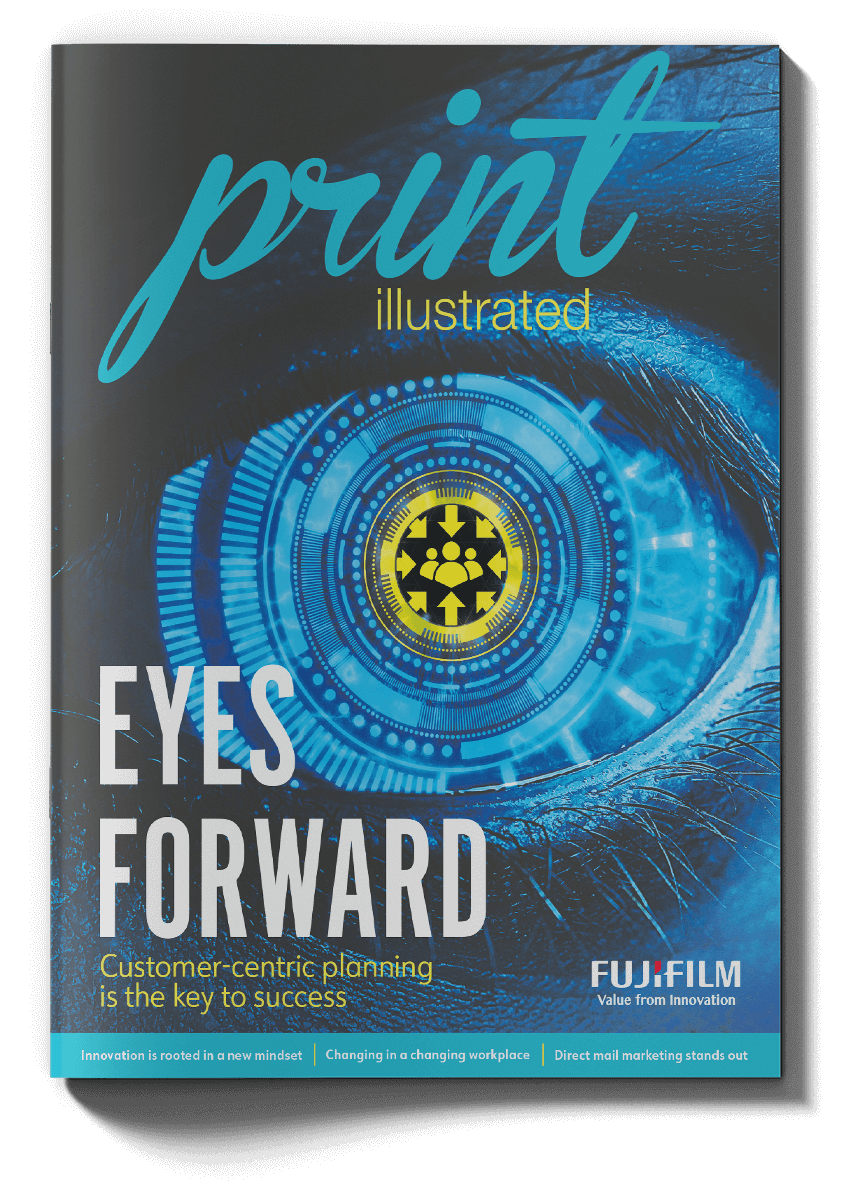Sometimes, the best ideas are the ones you don’t see coming. John Tenwinkel recalls the day a 4over team member from one of the printer’s die-cutting departments came to plant leadership management with a way to increase productivity. Intrigued by the discussion, the plant manager encouraged him to expand upon his initial idea. The plan was to push the pendulum further, so they worked together on the requirements, eventually crafting a business plan around the concept. After beating the idea up a few times—in a good way—they took the proposal to Tenwinkel, Senior VP Operations.
By the time it came across his desk, the model showed an aggressive four-times improvement in productivity with only a modest investment required. More than the idea, which ended up improving productivity by four times in each of 4over’s facilities, Tenwinkel remembers the team’s passion behind their conviction. He approved the funding on the spot, and eventually recognized the team member during a company-wide town hall meeting—fanfare and all. Before long, other plants reached out to discuss the approach.
“We collectively celebrated the success of this, and it caught on like wildfire,” Tenwinkel says. “We’ve had numerous innovative ideas that have come up throughout our organization—some have worked, others have not. Not every throw down to second is going to get the runner out, but if you don’t throw the ball, the runner will always take the base.”
The lesson here, and there are many, is that the best way to encourage innovative thinking is to let your employees know that first of all, you want to hear what they are thinking, and second, it is okay if their ideas do not always pan out. Pushing them to think innovatively cannot come with punishment.
“Encouragement at all levels to step outside of comfort zones must be your norm.”
– John Tenwinkel, Senior VP Operations, 4over
As the age-old philosophy reminds us, building an innovative mindset starts at the top. It begins when you push your team to continually seek out bigger, better and more efficient ways to get the job done. Tenwinkel believes that when you expand your mind beyond the world you operate in, you open yourself up to more opportunities. “Aside from being well-read on our industry’s trade publications and attending trade shows, I’ve also looked to other industries to draw parallels to ours. You’d be amazed to see how many of the challenges we face are similar in industries like technology and healthcare.”
Just recently, Tenwinkel attended a conference that had zero printers in attendance. He recalls sitting there listening to an array of remarkable stories—and how each of them were similar to the challenges the print industry faces. Some of these parallels can be found by building stronger relationships with your vendors.
“We may know our world really well, but our vendors have customers of different sizes, markets and other lines of businesses,” Tenwinkel says. “Part of being a strategic partner with our company means a structured approach reviewing KPIs. It means taking time to help us think innovatively about our businesses and how we can take them both to the next level. This has brought about more than one innovative initiative that our organizations both carve out time and effort to support.”
In a perfect world, the innovative culture you build should support new ideas, recognize effort around not just results, but how you do business. An innovative culture is woven within every facet and every role, starting with annual strategic planning from the top, down. If leadership buys into the idea that innovation can drive value in an organization, investment should follow. This includes resources, equipment and process engineering. That does not mean you have to build an “innovation budget,” but you must be willing to understand that innovation needs to be supported with funding in several ways.
“Trial and error need to be accepted,” Tenwinkel says. “Encouragement at all levels to step outside of comfort zones must be your norm. Innovative ideas could cause short-term costs or capital investments, but if your team doesn’t see the support from the organization, your efforts to encourage an innovative mindset will fail. Innovation can’t just be a buzzword—a culture that develops an innovative approach requires putting your money where your mouth is and being consistent.”

Opening your mind
When longtime printer SmithPrint started the marketing firm, Toolbox Studios, the plan was to use as many different types of software to help customize and personalize its campaigns. The transformation meant that SmithPrint would not just be identified as a printer, but as a marketing services provider.
Founded in 1995 by Barney Smith, the company worked on magazines, brochures, business cards and other print products for clients like the San Antonio Spurs, the DoSeum and the University of Incarnate Word. His wife, Cece Smith, runs Toolbox Studios as President and Chief Strategist, while Barney’s sons, Ryan, Matt and Andrew, handle the print side of the business.
Today, driven by Cece’s innovative leadership, Toolbox Studios helps its clients spearhead a number of launches and turnarounds as a full-service advertising, media and social content agency. “If you are not innovating, you are falling behind. To build a culture of innovation, it must come from the leadership. There must be willingness to take a risk and possibly fail, and to learn and try again. Creative problem solving or innovation must be celebrated and rewarded. The leader must empower your team to go for it.”
“To build a culture of innovation, it must come from the leadership. There must be willingness to take a risk and possibly fail, and to learn and try again.”
– Cece Smith, President/Chief Strategist, Toolbox Studios
Like every innovative champion, Cece believes that innovation starts at the top, where leadership must not only inspire creative and enterprising ways of doing things, but also continually learn. And not just industry knowledge, but technology, psychology and all kinds of disciplines that enable a leader to think outside of the box. If you are going to learn, it must be in a strategy and it must be measured. “Innovation is the only way to differentiate your company. It allows you to add value to your customers and price becomes less of an issue. Print is a commodity if you are not innovative.”
And here’s the thing to keep in mind: Not all of your employees are going to want to be innovative, but you must give them the opportunity to do so. Try creating an innovation team that meets regularly, learns together and shares insights. Create a place where no idea is a bad idea, and where failure is certain and expected, but learning from it is a must. “Don’t get hung up on the education level of the innovation team members,” Cece says. “Some of the best innovation comes from the people doing the actual work.”
In the end, “beating up ideas” and challenging your team to think through everything and anything is the best way to keep everyone honest and unlock the creative side of what you can—and should—do.

